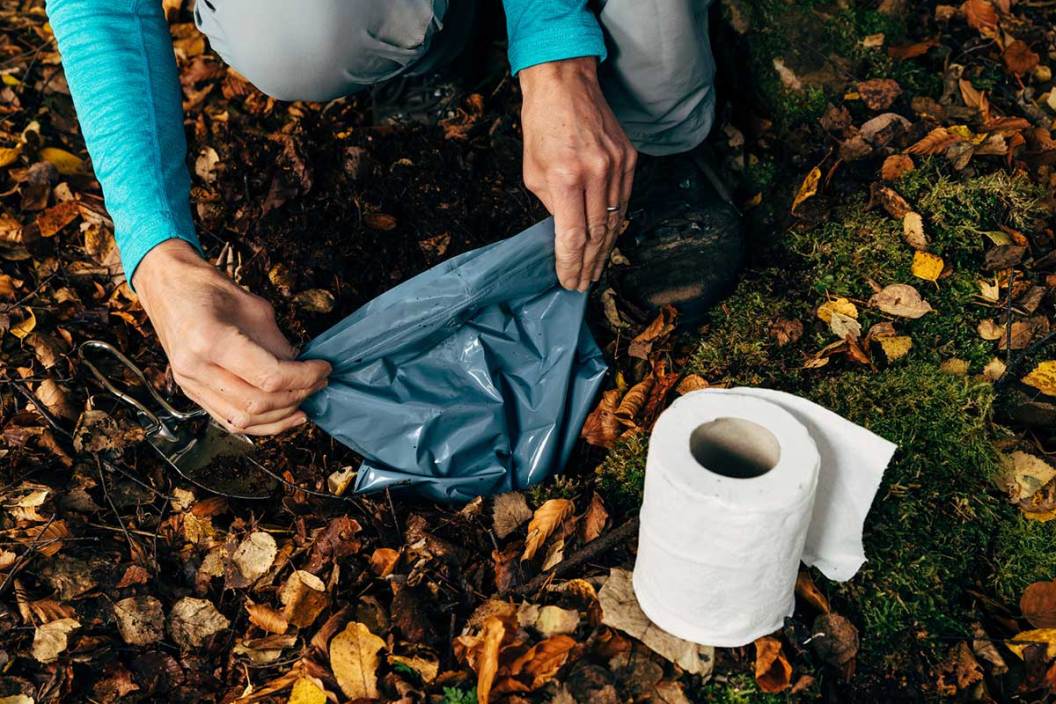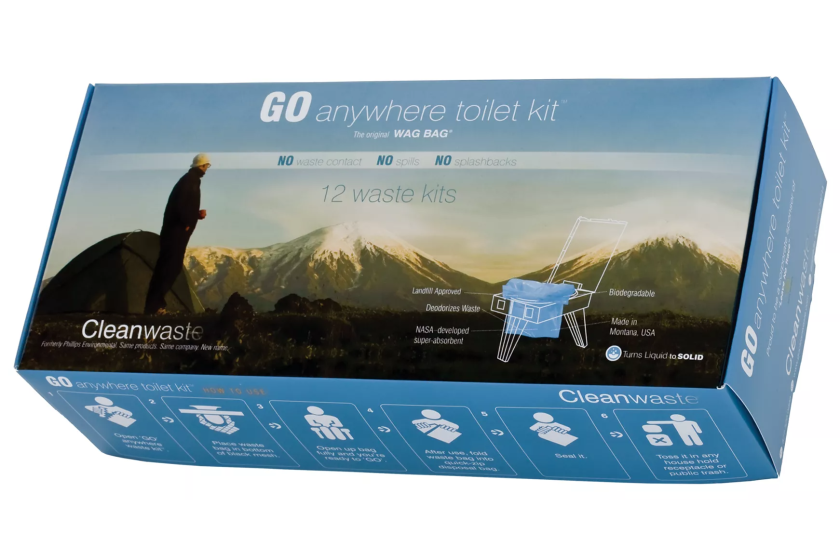More and more people have found the joys of the outdoors over the past decade—roughly 55% of the U.S. population in 2022 alone, according to the Outdoor Industry Association. We love more people outside—but the poop starts to pile up in the backcountry. The best solution: Carry a poop bag, better known as a wag bag.
As a mountain guide, I have had to dispose of my own waste (and that of my clients) in a myriad of different ways depending on the regulations of the public land we're on. When guiding on Denali's West Buttress (which, it's estimated, had over 70 metric tons of poop deposited on it before the National Park Service stepped in), we all share a small poop can that I carry off the mountain, where the poop is of in a septic system. In late summer, on more remote glaciers, we've pooped on flat rocks that we then throw into deep crevasses. I've also dug catholes (more on these later) in the desert, the tundra, and the alpine, using 'natural' toilet paper like flat rocks or snow, or packing out all of my toilet paper.
One of the most convenient ways—and my personal favorite way—to handle the poop problem on trips is using a wag bag.
What Is a Wag Bag
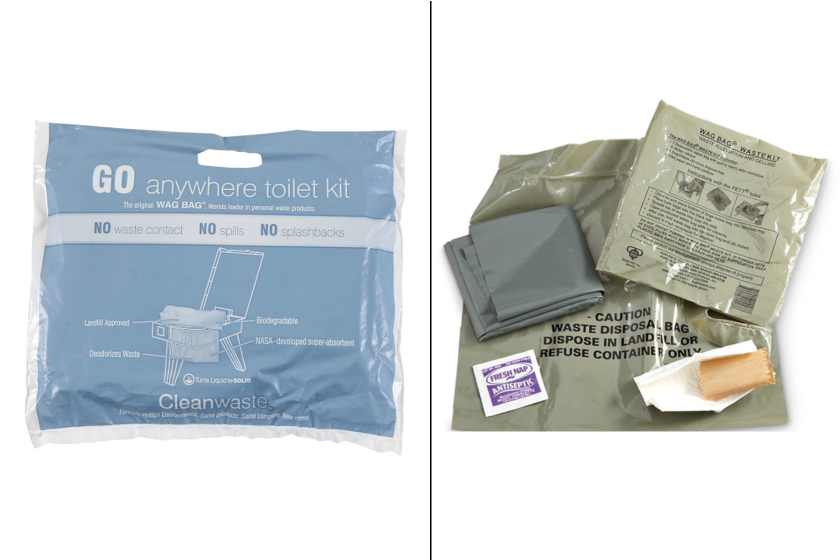
Human waste bags—more commonly called wag bags—come in a variety of different styles and sizes, but the basic principles are the same. Simply put, they are biodegradable bags that you put your waste in, often pooping right into the bag in what guides like to call a "direct-deposit" style, which you then pack out of the backcountry.
Wag bags are the best way to ensure you are leaving no trace of your poop, and are particularly useful in highly sensitive environments, such as in the alpine or desert. They are also required in many popular backcountry routes such as Mount Whitney, in Zion National Park, and on the glaciated routes on Mount Baker, Rainier, and Shasta, so make sure to double-check regulations
Why You Can't Poop Wherever You Want in the Woods
Humans produce, on average, about a pound of poop per day (to say nothing of the dogs they hike with). This is easy enough to manage in the front country and at trailheads where pit toilets and visitors center restrooms are a-plenty. But when people stray farther from the convenience of modern-day plumbing, poop problems start rising. With no obvious place to go, and with the possible embarrassment involved with asking where and how to go, sometimes people turn to the easiest solution: the dreaded "surface dump."
We've all seen the wads of used toilet paper and piles of poop in the backcountry, typically tucked behind a stand of trees or a particularly big rock by whichever hiker had an emergency. There are a lot of reasons leaving poop in the backcountry isn't ideal, from the fact that it ruins the pristine beauty of the outdoors to the fact that poop doesn't decompose quickly unless it's properly buried.
Even though it's comprised of (hopefully) organic matter, human poop still takes about one year to completely break down. In the year that it's sitting on the surface, not only is it unsightly and a stepping-in hazard to other visitors, but it is also harmful to our environment. Human feces release greenhouse gases and sometimes carry diseases like giardia, salmonella, and E. coli, which can enter the watershed and make people sick downstream. Using wag bags not only helps with waste alleviation and keeps our environment cleaner, but it also helps slow the spread of disease.
Wag bags can be bought as ready-made wag bag kits with everything you need, or made at home using plastic bags and a double bag system. Whatever system you use, wag bags are small and easy to carry, making them perfect for hiking and boating, or to keep in your camper in case of emergencies.
How to Use a Wag Bag
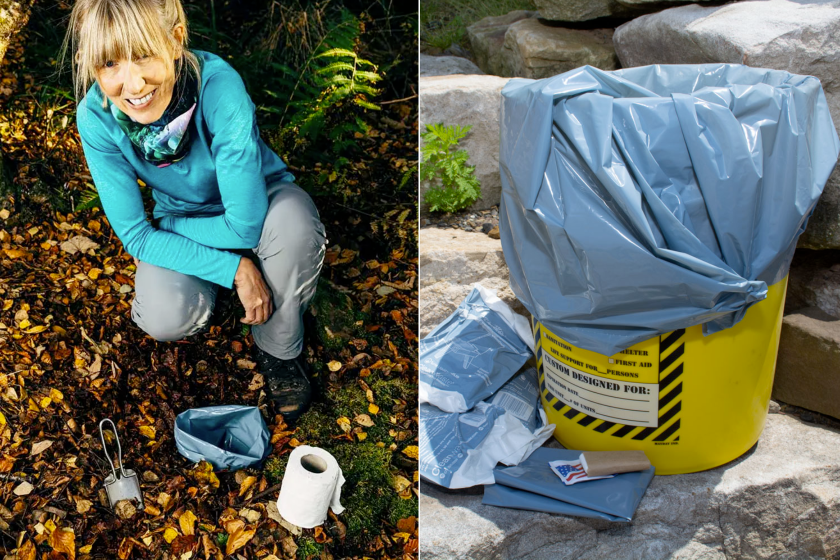
Getty Images, lucentius | Coleman's Military Surplus
Despite seeming intimidating at first, wag bags are actually very easy to use. Usually, these go-anywhere-toilet kits have everything you need inside of them, including instructions on how to use them printed right onto the bag, but here's a quick rundown on how to use them.
First, open up the puncture-resistant package. Most wag bags will include a small amount of toilet paper, a packet of hand sanitizer or hand wipes, a gelling agent that will contain your waste inside the bag, and a poo powder that acts as a deodorizing agent.
Remove the paper and sanitizer from the interior of the bag and set them aside. Open up the bag completely; you may want to use some rocks to keep the edges of the bag down or set it up so that it sits open on its own. You can also hold the edges of your bag against your hips. Your aim is probably not as good as you think it is, so to reduce the likelihood of an unfortunate miss, make sure you're completely covered by the bag.
Next, make your "deposit". It's important to note that waste bags are only for solid waste, not liquid waste. Make sure you urinate before using your wag bag!
When you're done, use the toilet paper and stick it into the bag along with your waste. Make sure to use hand sanitizer (just because you're in the woods doesn't mean your hygiene should go out the window), and put the spent packet into the bag along with your waste. Seal up the bag with the zip-close feature, removing any extra air while you close it up. Lastly, stash it in your backpack, where the gelling agent and poo powder will do its work. When you're back at the trailhead, toss the wag bag in the garbage can. It'll eventually end up in a landfill. Some popular wag bag area trailheads prefer you to dispose of your waste bag at home, so double-check any signs before filling up a public trash can with your poop.
If you're on a multi-day trip, be careful where you stash your bag at camp: some critters have a taste for human poop, and you don't want to have to clean up that mess if they get into it.
Which Wag Bag to Choose
Many companies produce their own version of a wag bag. You can find a variety of waste kit options at REI, Backcountry, Cabela's, and your local outdoor gear shop. Although the brands may differ, the product, in general, doesn't.
While using a wag bag is, in theory, very easy, crouching over a wag bag can be difficult and uncomfortable for some. There are numerous options for wag bag-compatible camping toilet systems. These foldable, travel-friendly seats are great for remote car camping or base camping. They hold a wag bag underneath them so you can poop in comfort and still easily pack out waste. You can also set a wag bag up in a 5-gallon bucket, with a portable toilet seat placed over the rim.
If you're planning on camping for a while, you can check out compostable toilets, too.
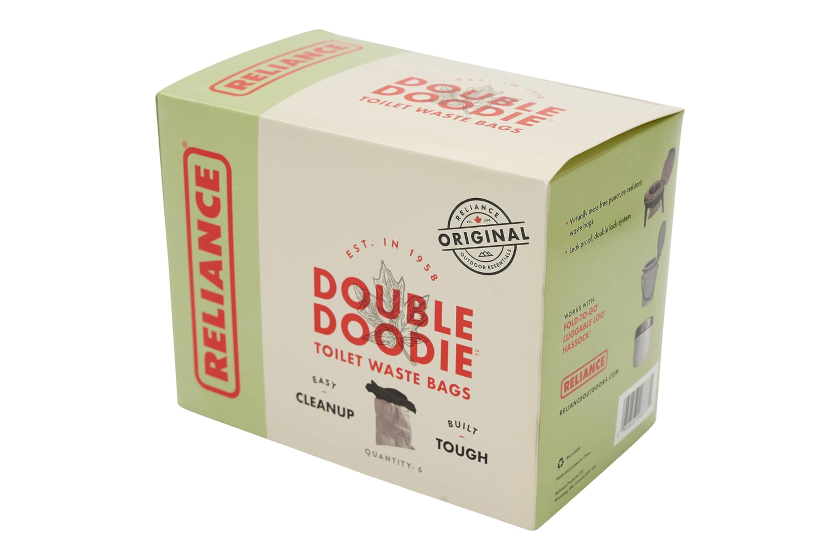
Reliance
Create Your Own
You can also make your own wag bag. Simply put some kitty litter, which is a deodorizer just like poo powder, into an interior bag, and then put the interior back in a sturdy, outer bag like a gallon zip lock.
Other Leave No Trace Bathroom Strategies
If your trailhead or campsite offers a pit toilet, use it! That is the most effective way to ethically keep waste out of the environment.
Another great option is the aforementioned cathole, which, in many areas, is the most common and accepted practice for ethically pooping outdoors. A cathole is exactly what it sounds like, a hole in the ground that you poop into.
When selecting a cathole site, make sure you are more than 200 feet away from a water source, and far from any campsite or trail. If you're camping in the same place for multiple nights or with a group, catholes should also be spread far apart. You don't want to dig up someone else's cathole by mistake!
Dig catholes in deep, rich soil in the sunlight if possible to aid with decomposition. While it may seem like a good idea to hunker down in a cave or under an overhang, these both block sun and rain from getting to the cathole, which hinders decomposition.
Using a small trowel, dig a hole in the soil 6-8 inches deep and 4-6 inches in diameter, or about the size of a Nalgene bottle. Do your business in the cathole. If you're using toilet paper, the best practice is to pack it out. You can also use "natural" toilet paper, like smooth sticks or rocks, leaves, and snow. Products like tampons, pads, and other personal sanitary products should always be packed out.
If you're planning a trip to an area that allows catholes, check out PACT's all-in-one outdoor cathole kit. Inside you'll find a trowel, a small tablet that, when wet with a few drops of water, expands into a wipe, a mushroom mycelium tablet that aids with decomposition, a storage pocket with a trash bag, hand sanitizer, and a guide to how to use it.
READ MORE: How to Plan and Prepare for Your First Backpacking Trip
